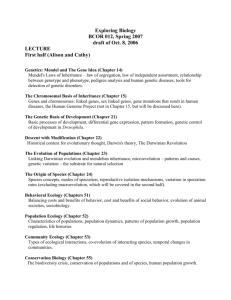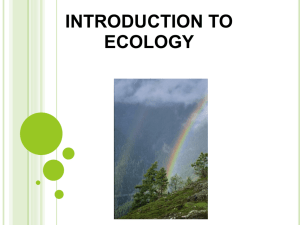Honors Biology
advertisement
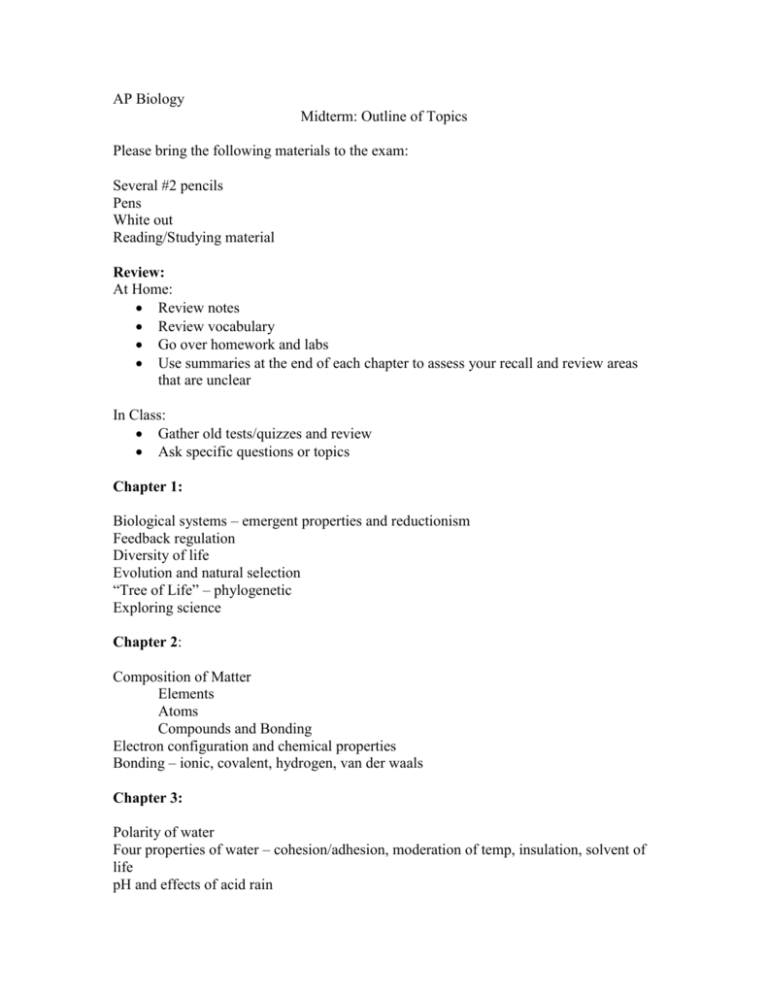
AP Biology Midterm: Outline of Topics Please bring the following materials to the exam: Several #2 pencils Pens White out Reading/Studying material Review: At Home: Review notes Review vocabulary Go over homework and labs Use summaries at the end of each chapter to assess your recall and review areas that are unclear In Class: Gather old tests/quizzes and review Ask specific questions or topics Chapter 1: Biological systems – emergent properties and reductionism Feedback regulation Diversity of life Evolution and natural selection “Tree of Life” – phylogenetic Exploring science Chapter 2: Composition of Matter Elements Atoms Compounds and Bonding Electron configuration and chemical properties Bonding – ionic, covalent, hydrogen, van der waals Chapter 3: Polarity of water Four properties of water – cohesion/adhesion, moderation of temp, insulation, solvent of life pH and effects of acid rain Chapter 4: Properties of carbon Versatility of carbon Functional groups ATP Chapter 5: Polymers Synthesis and breakdown Monomers Four organic compounds Carbohydrates Lipids Proteins Nucleic Acids Chapter 6: History of the cell Eukaryotic cell organelles The endomembrane system Mitochondria and chloroplasts Cytoskeleton Extracellular components and gap junctions Chapter 7: Cell membrane structure and function Transport of materials through membrane Passive Active Bulk Chapter 11: Cell-to-cell communitcation Long-distance and local signaling Reception of signals Transduction – different types Response Chapter 8: Forms of energy Metabolic pathway Free energy change and endothermic/exothermic reactions: spontaneous? ATP and energy coupling Role and function of enzymes Regulation of enzymes Chapter 10: Photosynthesis and the chloroplast The light reactions: the ETC and chemiosmosis The Calvin cycle C3, C4 and CAM plants Chapter 9: Cellular respiration and the mitochondria Glycolysis Citric Acid Cycle Oxidative phosphorylation: the ETC and chemiosmosis ATP production Fermentation: lactic acid and alcoholic Cellular respiration and photosynthesis Chapter 12: The cell cycle Mitosis Kinetichores Control of the cell cycle Cancer Chapter 13: Asexual vs. Sexual reproduction Sexual life cycles Meiosis Sources of genetic variation Chapter 14: Mendel’s laws of inheritance More complex forms of inheritance Polygenic, multiple alleles, codominance, incomplete dominance, pleiotropy, epistasis, multifactorial Environmental effects Human traits and inheritance Pedigree charts and genetic counseling Human disorders Chapter 15: Chromosomes and inheritance Morgan’s experiments on chromosomes Linked genes and genetic recombination and linkage mapping Sex-linked genes Chromosomal mutations or mistakes in number Chapter 16: DNA: Structure and discovery DNA replication Chapter 17: Transcription Translation Types of RNA Gene mutations and consequences Ecology Unit: Chapters 50-55 Ecology Basics Interactions between organisms and environment Biotic and Abiotic factors Role of Climate Biomes Behavioral ecology Proximate vs. Ultimate behavior Genetic component Behavior and diet; behavior and natural selection; behavior and survival Population ecology Exponential vs. logistic growth Abiotic and biotic influences on populations Human population trends Community Ecology Interaction between organisms and other organisms Distrubances and succession Ecosystems Primary productivity Energy transfer Nutrient cycles Human disturbances of cycles Conservation and restoration ecology

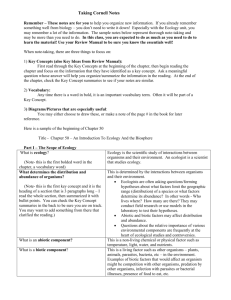
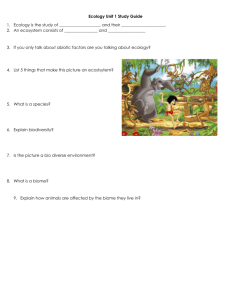
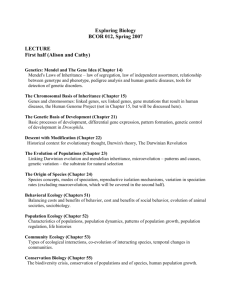
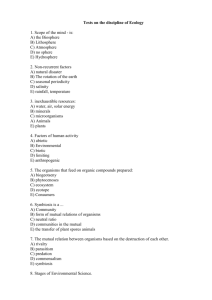


![[CLICK HERE AND TYPE TITLE]](http://s3.studylib.net/store/data/006863514_1-b5a6a5a7ab3f658a62cd69b774b6606c-300x300.png)


